Mexico offers a rich tapestry of experiences, from bustling urban centers to remote and charming cities that are often less frequented by tourists. These remote Mexico cities offer a chance to immerse oneself in Mexico’s diverse cultures, history, and natural beauty. Here are 10 of the best remote cities to visit in Mexico:
1. San Cristóbal de las Casas:
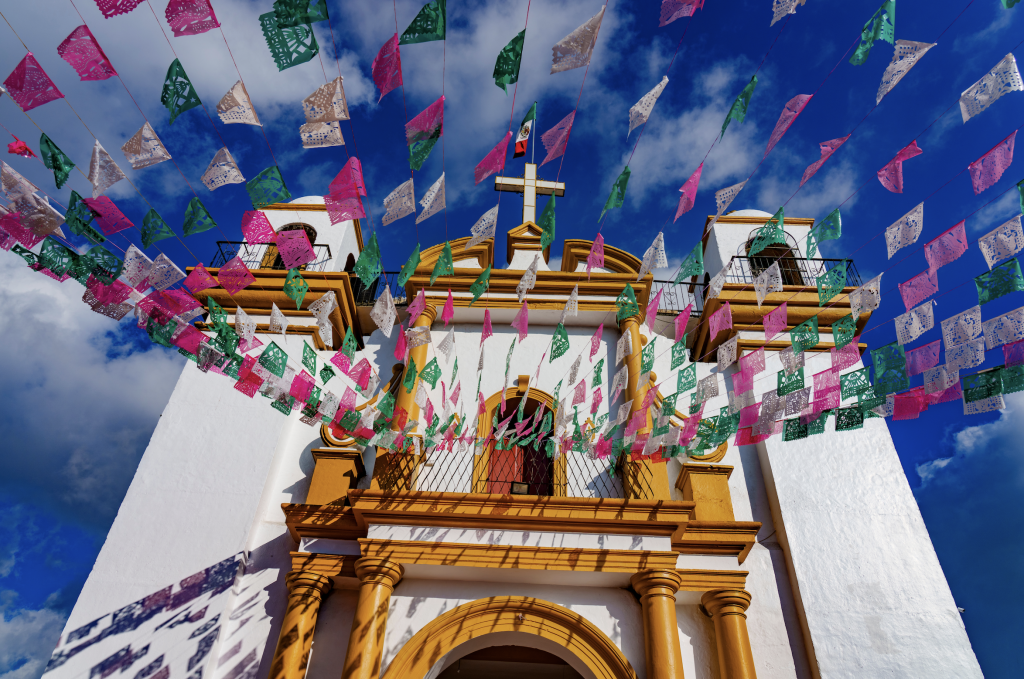
San Cristóbal de las Casas is a captivating colonial town nestled in the highlands of the southern Mexican state of Chiapas. Characterized by its cobbled streets, colorful buildings, and ornate churches, the city offers a blend of indigenous and Spanish colonial influences that are evident in its architecture, culture, and daily life. Its central plaza, the Zócalo, is frequently alive with activity, with locals and tourists alike enjoying the vibrant atmosphere surrounded by historic structures like the Cathedral of San Cristóbal and the Casa de la Sirena. The city’s altitude, at over 2,200 meters, ensures a cooler climate than much of tropical Mexico, which is a draw for many visitors.
Beyond its architectural and cultural allure, San Cristóbal de las Casas serves as a gateway to the indigenous communities of the Chiapas region. The nearby villages of San Juan Chamula and Zinacantán, for instance, provide fascinating insights into the Tzotzil and Tzeltal Maya cultures, where age-old traditions are still meticulously preserved. In these communities, indigenous customs, languages, and rituals are interwoven with modern Mexican life, offering a profound experience for those keen on understanding Mexico’s deep-rooted and diverse heritage. The town also offers a rich tapestry of craft markets, where artisans sell everything from handwoven textiles to intricate jewelry, embodying the spirit and craftsmanship of the region.
San Cristóbal de las Casas Tours
2. Oaxaca City:
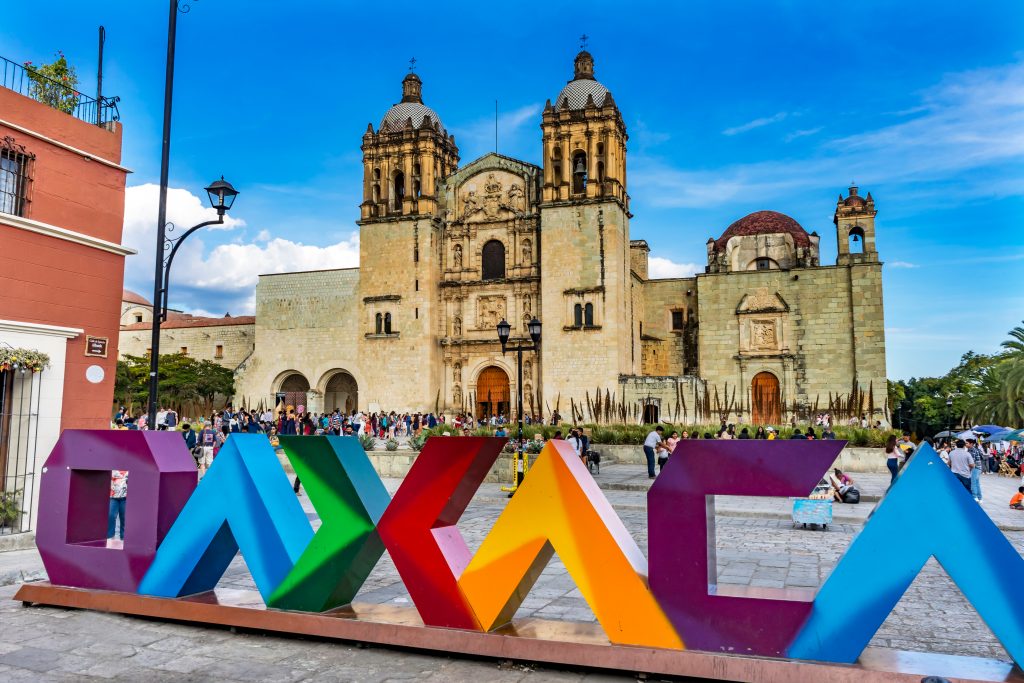
Oaxaca City, officially known as Oaxaca de Juárez, is the capital of the state of Oaxaca, located in southern Mexico. It’s a city renowned for its rich history, vibrant culture, and the preservation of its indigenous roots. With a city center that’s been designated a UNESCO World Heritage Site, Oaxaca boasts beautifully preserved colonial architecture, including the magnificent Oaxaca Cathedral and the Santo Domingo Temple. Its cobbled streets and colorful facades exude a charm that attracts travelers from around the world. This is one of the most beautiful remote Mexico cities.
At the heart of Oaxaca’s allure is its unparalleled culinary reputation. Often hailed as the gastronomic capital of Mexico, the city offers a vast array of flavors, from its famous “mole” sauces to the lesser-known delicacies like “chapulines” (grasshoppers). The region is also the birthplace of mezcal, a distilled alcoholic beverage made from the maguey plant, which visitors can sample in numerous local mezcalerías. In addition to its food and architecture, Oaxaca is known for its artisanal crafts, particularly its handwoven textiles and intricately carved and painted “alebrijes” (wooden fantastical creatures). Throughout the year, festivals and traditions, such as the Guelaguetza dance festival and the Day of the Dead celebrations, offer deep insights into the cultural tapestry of this enchanting city.
3. Guanajuato:
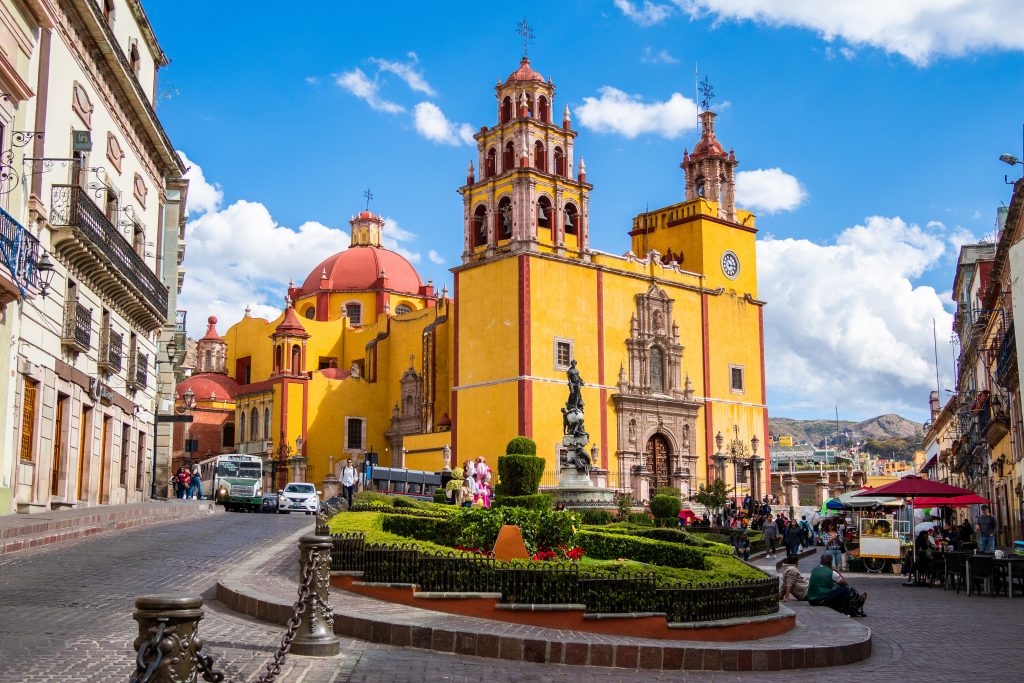
Guanajuato is a resplendent colonial city located in central Mexico, famous for its rich history, labyrinthine alleyways, and vibrantly colored buildings. Set in a narrow valley, the city’s streets twist and turn, often opening into small plazas adorned with historical monuments. Perhaps the most iconic of its many alleyways is the Callejón del Beso (Alley of the Kiss), where, according to local legend, two star-crossed lovers shared a tragic yet passionate kiss from opposing balconies. The unique layout of Guanajuato, with underground tunnels serving as thoroughfares, creates a distinctive urban landscape unlike any other in Mexico.
Guanajuato was once a major silver mining hub, and its affluence during the colonial era is evident in its ornate churches and elegant theaters, like the Teatro Juárez. It’s also home to the renowned Festival Internacional Cervantino, an annual arts festival that draws performers and attendees from around the globe. As a testament to its significance, Guanajuato’s historic center and adjacent mines were declared a UNESCO World Heritage site in 1988. The city also houses the Mummy Museum, which displays naturally mummified bodies from a local cemetery, offering a curious and, for some, eerie experience. With its rich tapestry of history, culture, and beauty, Guanajuato remains a cherished gem in the heart of Mexico.
4. Pátzcuaro:
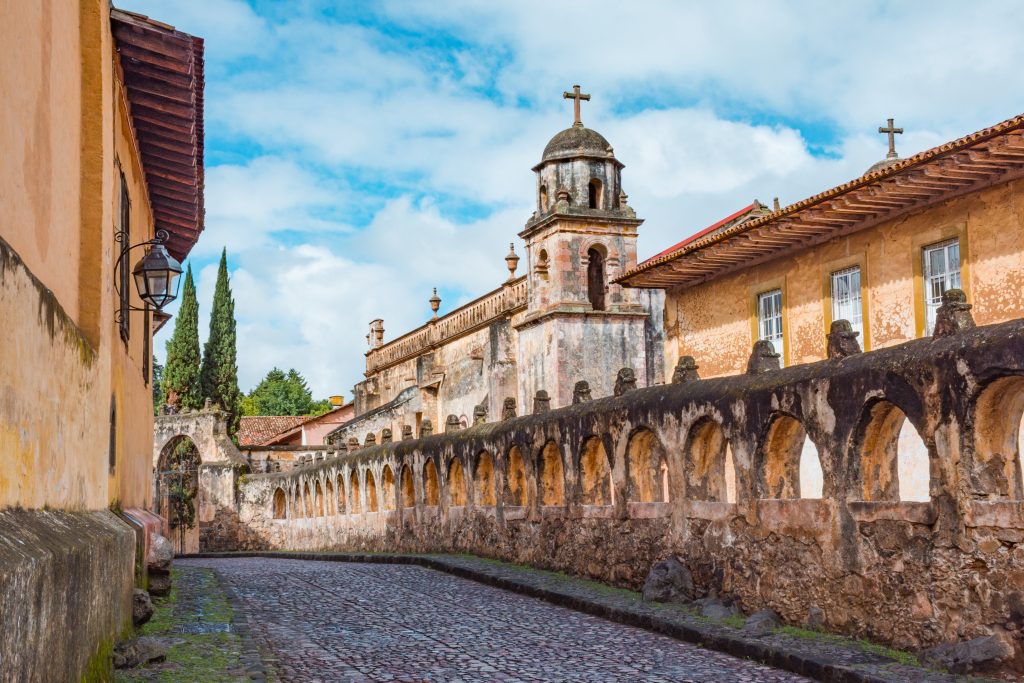
Pátzcuaro is a picturesque town located in the state of Michoacán, Mexico. It’s famed for its rich indigenous heritage, colonial architecture, and its idyllic setting beside Lake Pátzcuaro. The town itself is an amalgamation of red-roofed white houses, cobblestone streets, and tranquil plazas, with the Plaza Grande serving as the vibrant heart of the town. Here, under the shade of ancient ash trees, residents and visitors alike gather for lively chats, to savor local dishes, or to simply soak in the ambiance. This is another one of the most beautiful remote Mexico cities.
One of Pátzcuaro’s most renowned attractions is its annual Day of the Dead celebration. The town, along with the neighboring islands and communities of Lake Pátzcuaro, hosts one of the most traditional and reverent commemorations of this holiday in all of Mexico. Particularly evocative are the nighttime boat processions to Janitzio Island, where the indigenous Purepecha people hold graveyard vigils, illuminating the night with countless candles. This profound blend of pre-Hispanic and Catholic traditions creates a deeply spiritual atmosphere, drawing visitors from all over the world. Pátzcuaro is also a hub for regional crafts, with its artisans producing renowned goods like copperware, lacquerware, and intricately designed textiles. This charming town, with its rich tapestry of history, culture, and natural beauty, offers a truly authentic Mexican experience.
5. Real de Catorce:
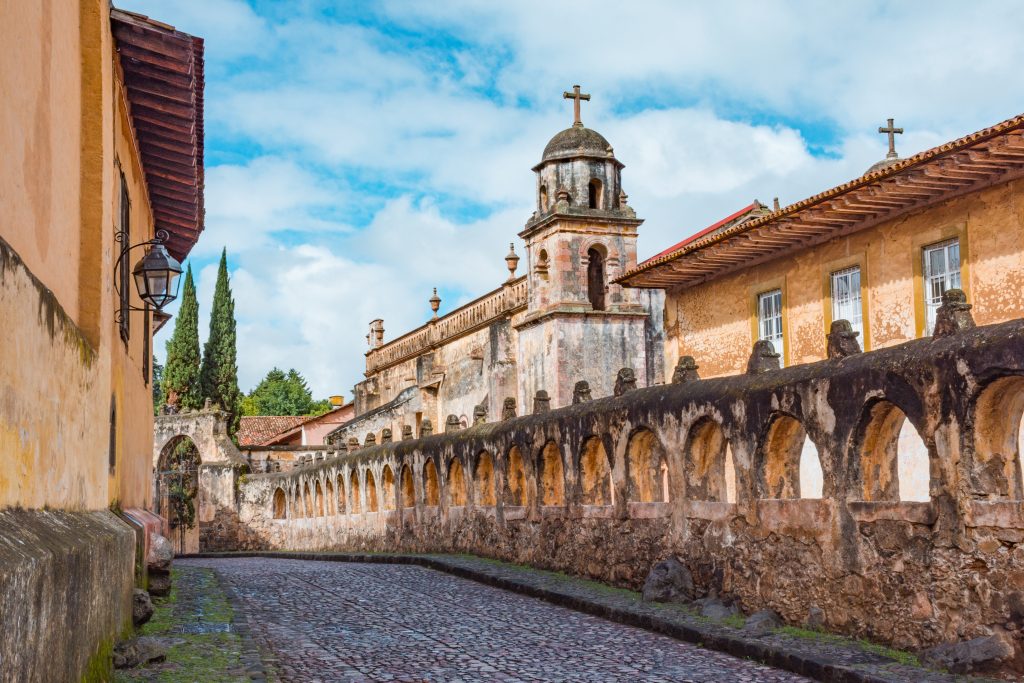
Real de Catorce is a remote and enigmatic town situated in the high desert of the state of San Luis Potosí, Mexico. Once a booming silver mining town in the 18th and 19th centuries, it went almost entirely abandoned when the price of silver plummeted, turning it into a ghost town for a time. In recent years, however, it has seen a resurgence as a travel destination, attracting those intrigued by its palpable mysticism, history, and stunning landscapes.
Entering Real de Catorce is like stepping back in time. Visitors must first pass through the Ogarrio Tunnel, a 2.3-kilometer-long passage that serves as the only entrance and exit to the town. Once inside, cobblestone streets, decaying haciendas, and old colonial churches await, all set against the backdrop of the rugged Sierra de Catorce mountain range. The town holds a special spiritual significance for many; it’s a pilgrimage site for both indigenous Huichol people—who come to gather peyote, a small, spineless cactus with psychoactive properties, used in their religious rituals—and for Catholics drawn to the miraculous image of St. Francis of Assisi in the local parish.
For modern visitors, Real de Catorce offers a blend of history, spirituality, and natural beauty. Activities like horseback riding through the surrounding desert, exploring abandoned mines, and engaging in the town’s slow, tranquil pace of life make it a unique and enchanting destination. The isolation and atmospheric beauty of Real de Catorce also attracted filmmakers, most notably as a location for the movie “The Mexican” starring Brad Pitt and Julia Roberts.
6. Todos Santos:
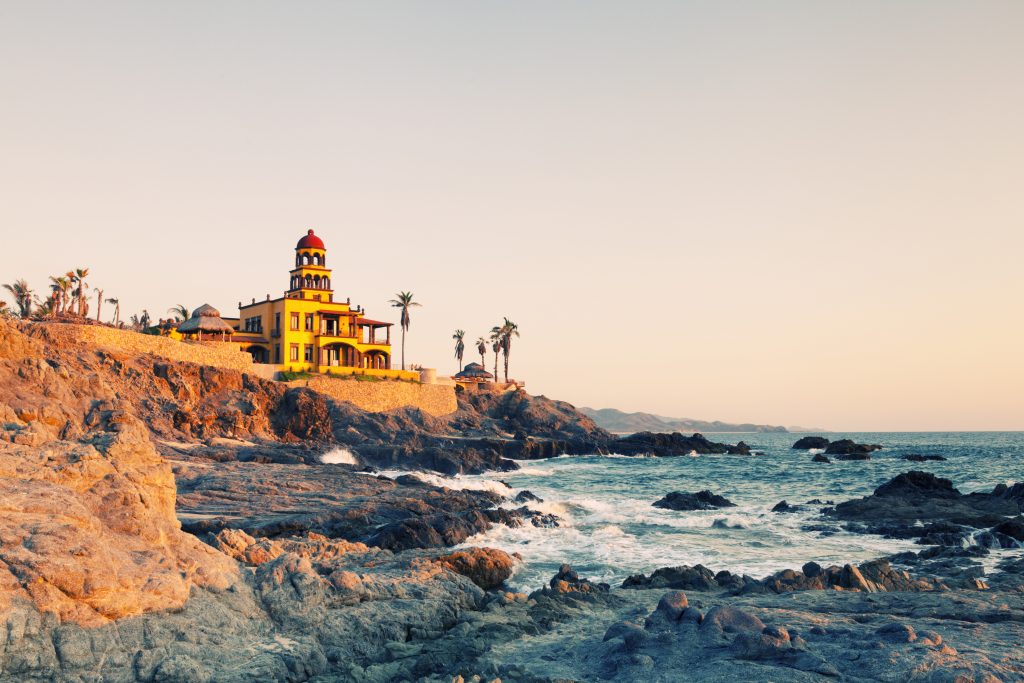
Todos Santos is a quaint and artistic town located on the Pacific coast of Baja California Sur, Mexico. Known for its bohemian ambiance, vibrant arts scene, and pristine beaches, Todos Santos offers a serene escape from the more bustling tourist destinations in the Baja Peninsula. It’s no wonder the town has been designated a “Pueblo Mágico” (Magic Town) by the Mexican government, a title given to places that offer a unique cultural and historical experience.
One of the standout characteristics of Todos Santos is its rich art culture. The town is dotted with art galleries, studios, and craft shops, where local artisans and expatriate artists display their work, ranging from paintings and sculptures to handcrafted jewelry and textiles. The colonial architecture, with its red-tiled roofs and vibrant facades, adds to the town’s charm, especially when contrasted with the surrounding desert landscapes and the azure Pacific Ocean.
Beyond the arts, Todos Santos is also a haven for surfers and nature enthusiasts. Nearby beaches like Playa Los Cerritos and Playa San Pedrito are popular surf spots. The town’s proximity to the Sierra de la Laguna mountains allows for hiking and bird watching, and between December and March, the coastline becomes a prime location for whale watching, as gray whales migrate to the area. Adding to its allure, Todos Santos boasts a range of boutique accommodations, gourmet restaurants, and cafes, making it a perfect destination for those looking for a mix of culture, relaxation, and natural beauty.
7. Zacatecas:
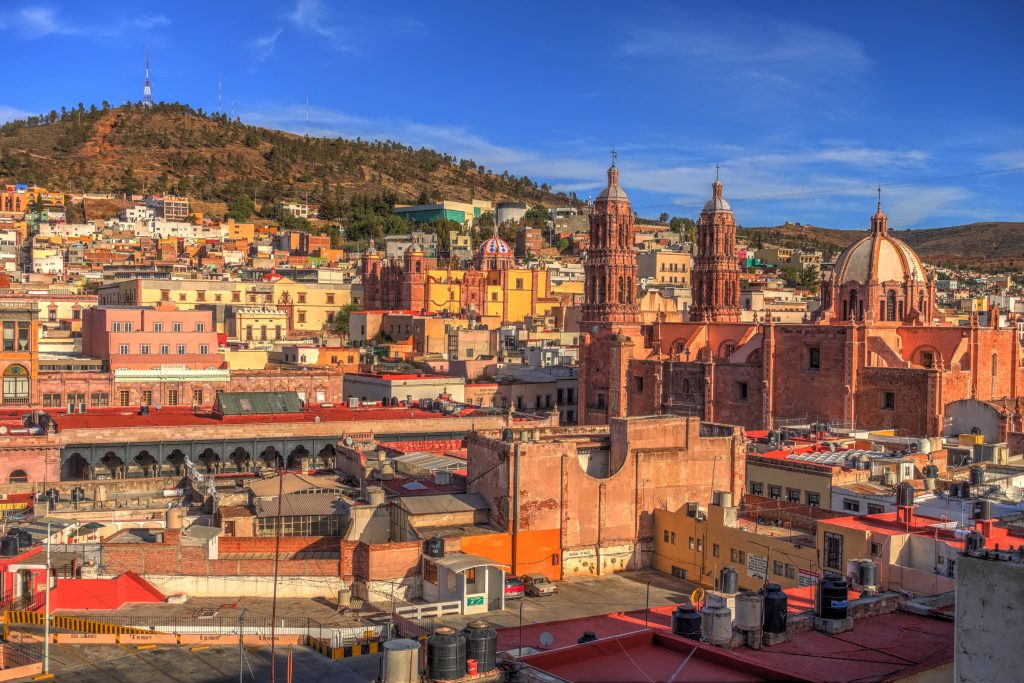
Zacatecas is an enchanting colonial city situated in north-central Mexico, celebrated for its rich mining history, splendid architecture, and intricate network of winding alleys and tunnels. Founded in the late 16th century after the discovery of silver, the city quickly grew into one of the most important mining areas in the New World. This affluence is evident in the city’s opulent colonial buildings, grand churches, and plazas. In recognition of its historical and architectural significance, Zacatecas’ historic center was designated a UNESCO World Heritage site in 1993.
The city’s landscape is dominated by the Cerro de la Bufa, a large hill that offers panoramic views of the city below and is home to the iconic Chapel of Our Lady of the Patrocinio. One of the most popular attractions in Zacatecas is the Mina El Edén, a historic silver mine that can be toured to gain insights into the city’s mining past. Beneath the city streets lies a labyrinth of tunnels, once used for drainage and mining purposes, some of which have been converted into roads, offering a unique subterranean driving experience.
The cultural scene in Zacatecas is also noteworthy. The city hosts numerous festivals throughout the year, and its museums, like the Pedro Coronel Museum and the Zacatecan Museum, showcase impressive collections of art and historical artifacts. Whether wandering its cobblestone streets, exploring its former mines, or indulging in its vibrant cultural events, visitors to Zacatecas are treated to a captivating blend of history, beauty, and tradition. This is one of the most beautiful remote Mexico cities.
8. Álamos:
Álamos, located in the southern part of the state of Sonora, Mexico, is a gem of colonial architecture and history. Often referred to as “La Ciudad de los Portales” due to its beautifully arcaded buildings, the town exudes an old-world charm, with its cobblestone streets, Spanish colonial mansions, and leafy plazas. The rich silver deposits in the surrounding areas propelled Álamos to prominence in the 18th and 19th centuries, leading to the construction of numerous opulent buildings that reflect its erstwhile prosperity.
This town, with its well-preserved historical core, was designated a “Pueblo Mágico” (Magic Town) by the Mexican government, a distinction that underscores its cultural, historical, and aesthetic significance. Beyond its architecture, Álamos is also known for its vibrant cultural scene. The town hosts several events throughout the year, with the Álamos International Film Festival and the Alfonso Ortiz Tirado Festival, dedicated to opera and classical music, being particularly noteworthy.
Nature enthusiasts will appreciate Álamos’ proximity to the Sierra de Álamos–Río Cuchujaqui Biosphere Reserve, a biodiverse region home to a myriad of bird species, making it a coveted spot for birdwatching. Whether drawn by its historical allure, cultural events, or the surrounding natural beauty, visitors to Álamos are guaranteed a rich and multifaceted experience. This is one of the most beautiful remote Mexico cities.
9. Parras de la Fuente:
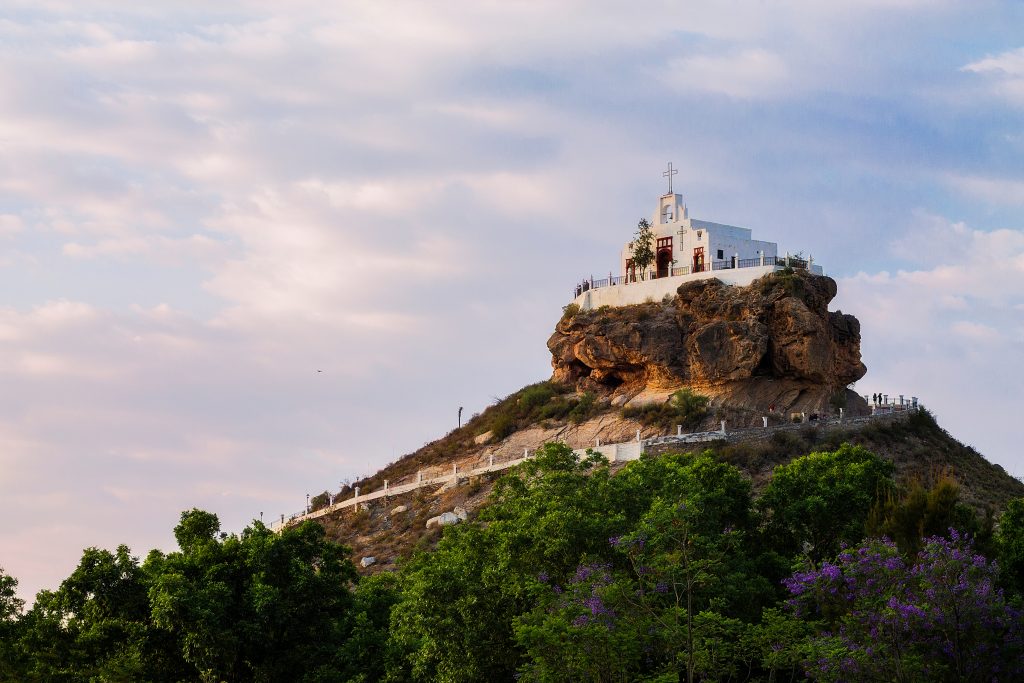
Parras de la Fuente is a picturesque town located in the state of Coahuila, in northern Mexico. Known as the “Oasis of Coahuila,” this enchanting place is characterized by its vineyards, cottonwood trees, and water springs that contrast beautifully with the arid surroundings typical of the region. The town’s rich history is rooted in viticulture, and it proudly lays claim to the title of producing the oldest wines in the Americas, with winemaking traditions that date back to the late 16th century.
The most iconic vineyard in Parras de la Fuente is Casa Madero, recognized as the oldest winery in the American continent. Visitors to the winery can take guided tours to learn about its long history, the wine production process, and, of course, enjoy tastings of the exquisite wines produced here. But the allure of Parras extends beyond just its vineyards. The town’s colonial architecture, with its well-preserved churches and houses, offers a glimpse into its storied past.
Beyond wine, Parras de la Fuente is also celebrated for its serene landscapes, especially the bodies of water such as the Laguna de Madero and the numerous springs that dot the town. This natural beauty combined with the town’s cultural heritage earned it the designation of a “Pueblo Mágico” (Magic Town) by the Mexican government. Whether you’re a wine aficionado, a history enthusiast, or simply a traveler in search of tranquil beauty, Parras de la Fuente promises a delightful and enriching experience.
10. Tlalpujahua:
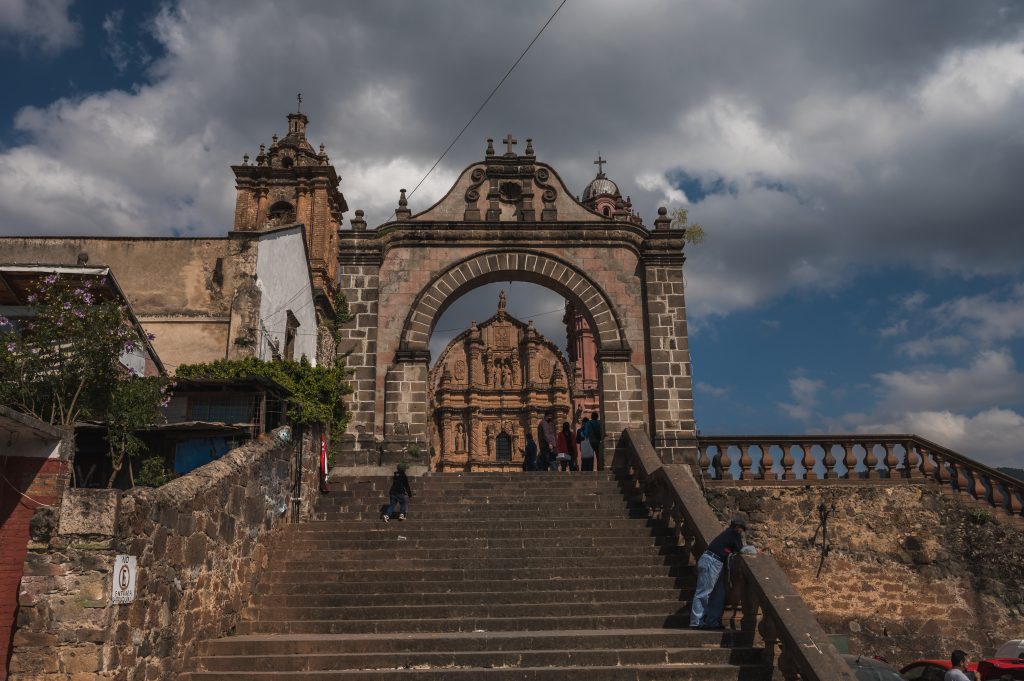
Tlalpujahua, often dubbed the “Town that Christmas Never Left,” is a captivating municipality nestled in the mountains of the state of Michoacán, Mexico. This “Pueblo Mágico” (Magic Town) is steeped in history, both glorious and tragic, which has significantly shaped its present-day identity.
During the 20th century, Tlalpujahua was a thriving mining town, known particularly for its gold deposits. The prosperity from the mining industry led to the construction of elegant buildings and infrastructure. However, in 1937, a catastrophic event transformed the town’s destiny: a landslide from a nearby mining dump engulfed a significant portion of the town, leading to a decline in its mining industry. This is one of the most beautiful remote Mexico cities.
In the face of adversity, the resilient inhabitants of Tlalpujahua adapted and found a new lifeline in the art of making Christmas ornaments. Today, the town is famed for its artisanal, hand-blown glass Christmas spheres. Workshops and small factories craft millions of these ornaments every year, exporting them worldwide.
Visiting Tlalpujahua offers a unique experience, especially during the months leading up to Christmas, when the streets are lined with stalls selling a myriad of sparkling ornaments. The town’s rich mining history is also palpable, with remnants of its opulent past visible in its colonial architecture and landmarks like the Sanctuary of Our Lord of Mercy. Tlalpujahua, with its intertwining tales of tragedy, rebirth, and enduring festive spirit, stands as a testament to the indomitable spirit of its inhabitants.
Tlalpujahua ToursWhile these cities might not be as widely known as some of the country’s more popular tourist destinations, each offers a unique experience that showcases the depth and diversity of Mexico’s cultural and natural treasures. As with any travel, it’s essential to research safety and local guidelines, especially when visiting more remote areas.